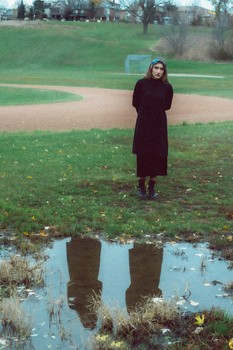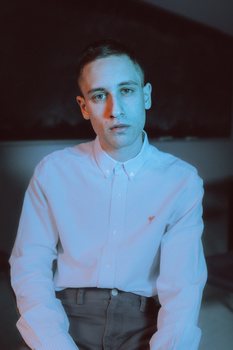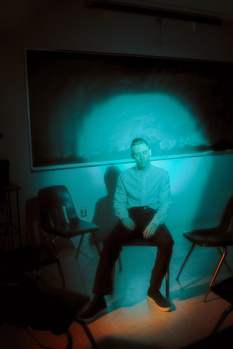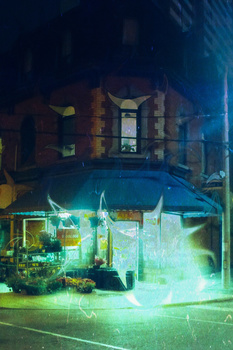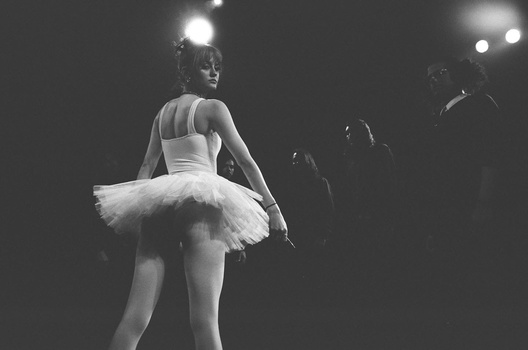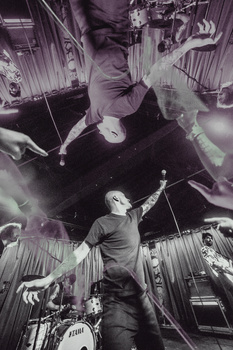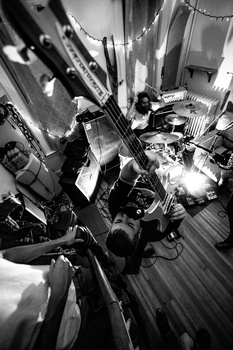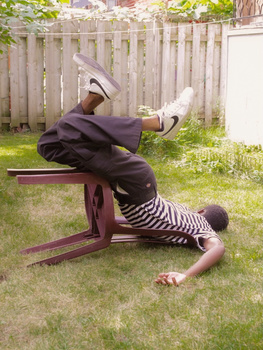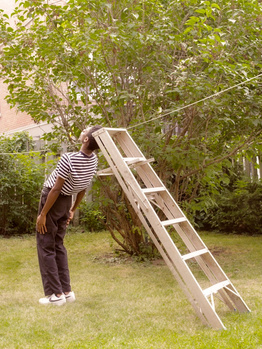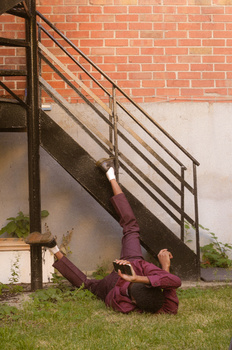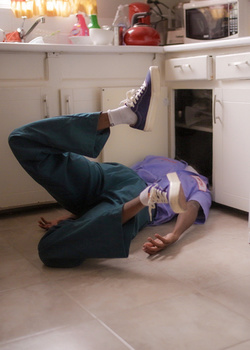Alice Hirsch (they/them) is a portrait and music photographer based out of Toronto, Canada. They combine the best of vintage images with a new world mindset of collaboration and exhibition.
Alice’s dad had an old Olympus film camera which he gifted to them when Alice was 16. Although the camera broke after only a few months of use, the images created on the camera hold a basis for the types of images Alice creates now. Film images have a certain look and materiality to them; they are an actual object rather than pixels, and they aren’t always perfect. What in digital is noise is called grain in film, and film photographers actually like grain (for the most part).
In contrast and as a turn of phrase, Alice is very much a child of the internet. Their interest in photography began with a photography blog they started on Tumblr as a teenager. Finding moments of extraordinary within the ordinary was what really sparked this early interest in photography. The spark remained lit, and as an adult, Alice leveraged their passion into a career as a professional photographer.
Because of these reasons, Alice’s images have a certain vintage and film materiality to them. They combine the best of the real with the imaginary. Alice still works in film when possible but also incorporates digital into their workflow. Even when working with film, they emulate classic film emulsions and imperfections.
What keeps me motivated to create is just seeing photography break boundaries… seeing people use everyday techniques to create something that is extraordinary in itself.
Alice is a proponent of using photography as a fantasy tool. Taking the domestic, the mundane, and the everyday and turning it into something that is a sublime and surrealist tool to highlight underlying societal paradigms and narratives is a strength that photography, solely of all the arts, possesses. It’s this transformation that motivates Alice to create.
Music Photography
Alice’s earliest memories are filled with all types of music and records. Their mother listened to everything, and their dad was big into punk. This early childhood interest grew with Alice’s first forays into music photography by way of friends. Alice’s friends would produce and create small independent music concerts either in someone’s basement or backyard. Of course, even with these small productions, having images to help promote the show and images of the performances were necessary.
With their first crop sensor camera and kit lens in hand, Alice photographed their earliest shows. The photos weren’t anything great straight out of camera, but with a few tweaks and edits, they still held a certain visual voice that was uniquely Alice’s.
Your style is your style. If you like it, go for it.
By posting these early images online and tagging the bands, Alice was invited along and given more access for future shows, including when the bands began to gain notoriety and play in bigger venues. Forging connections early and building on them takes time.
Live shooting is a very good way of connecting with bands. I found it very easy to connect with bands, but not just with bands but also agencies and management.
Music imagery holds as much value as the music itself. Album cover art is as integral to the music as the music itself. Photographers and visual artists share a mutual connection to musicians, singers, and bands. It’s all art.
Self-Assigned Projects: 'An Ode to the Inner Child'
As a photographer, you know you can do the work. You know you can create images which are creative and impactful. But without having images to exhibit, clients are often hesitant to give up their time and invest their money into your craft. Working as a photographer means getting used to rejection. Prior to creating this series of images, Alice approached potential clients to photograph creative portrait shoots, the idea being that they were already working shooting live music so this would be another added layer to that narrative. Unfortunately, convincing someone to do something that you yourself haven’t done yet is an impossible task, and Alice received a lot of rejections and non-responses.
Clients need to see what they’re getting. Alice self-assigned a portrait series of images, "An Ode to the Inner Child," which they could then leverage to garner paid shoots. Self-assigning projects, including test shoots, and treating them like paid shoots is a great way to build a portfolio. These images can then be leveraged in your own marketing collateral to approach potential clients.
Like much of Alice’s imagery, their series, despite commercial intentions, is very much a true representation of themself. They based the images on their own childhood of being someone who is a little bit weird and just a little bit klutzy and is just trying to create something that is just that little bit off the beaten path.
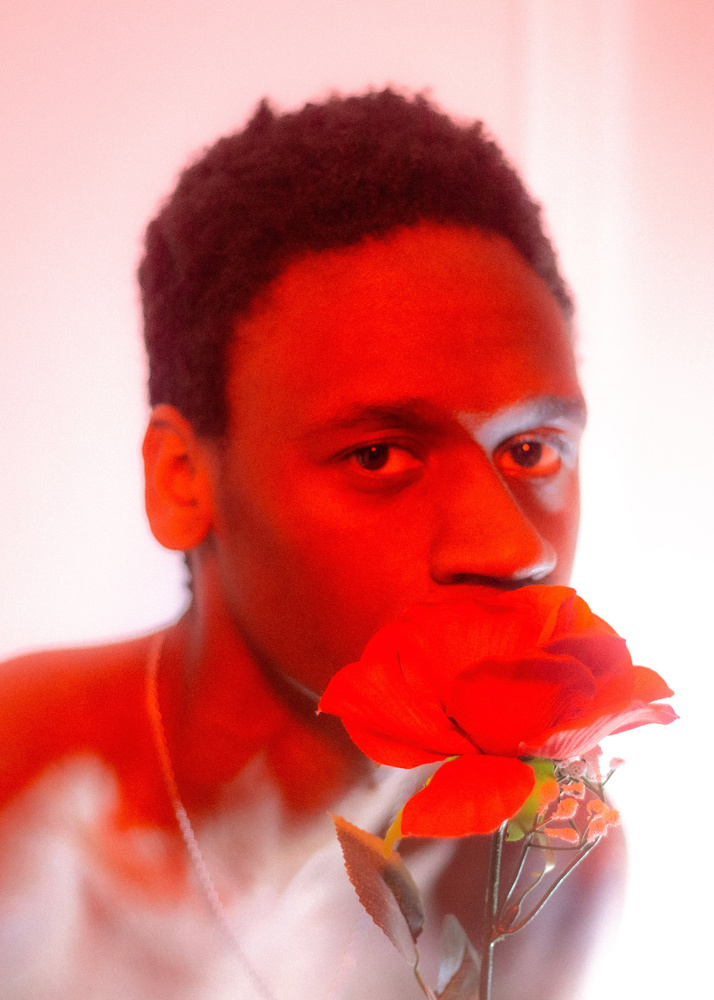
The images pay homage to Alice’s lived experience as a trans person of color. Often, as creatives who come from minority groups, we are only ever included in the conversation for our trauma. Speaking for myself, the number of times I’ve been asked to speak at an event or share my series of images about trauma is unreasonably too many. Alice wanted to subvert this narrative and speak from a place of joy and positivity and create images which center the other, but in a way that is more about the positive feelings of what is happening in the images rather than the trauma and negativity. These images could be anyone, and that’s what makes them great.
I removed all sorts of inner judgement. And I just went with the flow.
It’s important to never give up on your passions. It’s only through your passions that life is worth anything. So don’t accept rejection or allow others to tell you what you can or can’t do. Sure, we live in a society where money is needed to live. But if as a creative you are in it for the money then that isn’t quite enough. There needs to be a spark or a passion for the craft. Keep creating and exhibiting and there will eventually be an audience for your work.
Images by Alice Hirsch. Used with permission.

